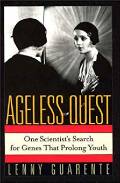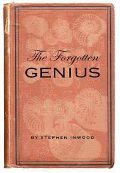Robert Hooke and The Discovery of the Cell
 Who:Robert C. Hooke
Who:Robert C. HookeWhen:January 01, 1653
Consignment from the King, Personal curiosity
Methods: Looked at a thin slice of cork through a microscope at 50x
Institution: The Royal Society
Where: London, England
Funding: King Charles II
Technology: Microscope
In 1661 King Charles II of England commissioned Sir Christopher Wren to create a series of microscopical studies. Wren obliged, but after a few presentations found he didn't have the time and gave up the project to an upcoming scientist with something of a knack for drawing and mechanics. The rest is history.
Robert C. Hooke (1635-1703) was 26 years old when he took the assignment from Wren and joined the Royal Society For Scientists. A self-educated child prodigy, he showed technical aptitude by recreating the entire inner workings of a clock out of wood, then assembling it to run. Hooke also taught himself technical drawing, a skill he used to capture observations through his microscope.1
 |
| Hooke's Drawing of his Microscope from Micrographia. |
Hooke applied his technical abilities to invent ways of controlling the height and angle of microscopes, as well as mechanisms of illumination. Variations in light allowed Hooke to see new detail, and he used multiple sources of illumination before producing any single drawing. Hooke's technical efforts created magnifications of 50x, enabling insight to a world not yet known in the 1600s.1
King Charles only requested insect studies, but Hooke went beyond his commission and looked at everything from fabric, leaves, mica, glass, flint, and even frozen urine. Hooke did things like let a louse suck from his hand to observe how his blood traveled through its innards. He also stung himself with nettles to see where and how the poison was pumped into his hands.1
 |
| Hooke viewed a thin cutting of cork and discovered empty spaces contained by walls which he termed cells. |
When Hooke viewed a thin cutting of cork he discovered empty spaces contained by walls, and termed them pores, or cells. The term cells stuck and Hooke gained credit for discovering the building blocks of all life. Hooke calculated the number of cells in a cubic inch to be 1,259,712,000, and while he couldn't grasp the full effect of his discovery, he did at least appreciate the sheer number of these cells.2
Hooke recorded all his drawings and observations into Micrographia: or Some Physiological Descriptions of Miniature Bodies Made by Magnifying Glasses. After acknowledging the King and the Royal Society, the book covered a wide range of topics from the construction of microscopes themselves, to the spectrum of color, the molecular causes of fire, the crystal structure of objects, and the anatomy of insects. Published in 1665, the book became an instant best seller. Hooke had ignited the spark of cell theory and set a trend of scientists making discoveries by looking through microscopes on government payroll.
Author: Paul House
Date Published: Sept 9, 2009
Publisher: MasParaSol Media Group Ltd.
References




